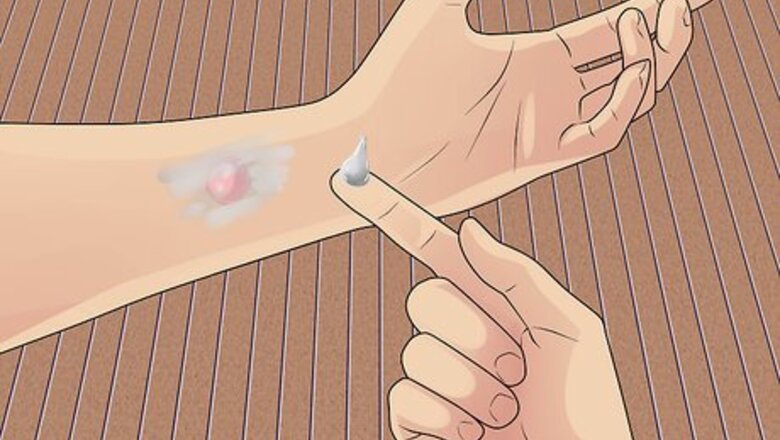
views
Lancing and Draining a Blister
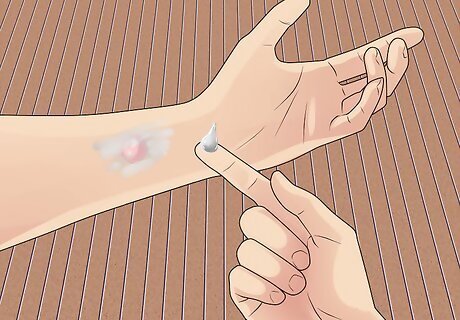
Assess the blister before choosing to drain it. Not every blister needs to be lanced. In fact, some experts recommend that you should only drain blisters that are exceedingly painful, in weight-bearing or high-contact areas, or larger than 0.8 inches (2 centimeters) in diameter. If the blister is intact and manageable, try to keep it intact. Apply a piece of moleskin, adhesive felt, or tape. Make sure this stabilizing adhesive is 1.5 to 3.25 inches (3.8 to 8.3 centimeters) larger than the blister with a central hole that can fit the entire blister. Apply antibiotic to the blister through the hole in your moleskin/felt/tape. Use adhesive tape to fix a large piece of clean gauze over the moleskin/felt/tape to completely cover the blister.
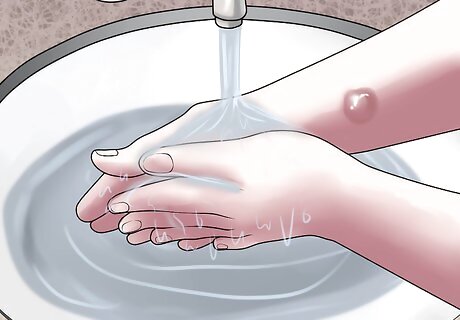
Wash your hands and the site of the blister. Having clean hands and a clean wound site are vital to prevent infection. Make sure you wash your hands before you touch the blister or attempt to drain it, and make sure the skin on and around the blister is also clean and dry. Wet your hands under a stream of clean, running water. Apply soap while your hands are still wet and work it into a thick lather. Spread the soap on every surface of your hands, including the backs of each hand, between the fingers, and under the fingernails. Scrub your hands with the soap for a minimum of 20 seconds, then rinse away all the soap under clean, running water. Use a clean, disposable towel to dry your hands, or let them air dry. Gently wash the blister and surrounding area with clean, running water. If you can position that appendage under the faucet, lather some soap onto the blister and thoroughly rinse it away.
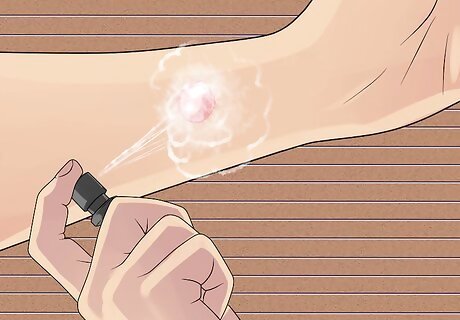
Use a disinfectant at the site of the blister. Even though you should have washed the site of the blister under clean, running water, there may still be residual bacteria that could cause an infection. Since you will be breaking the skin with a needle, it's best to sterilize the area with a disinfectant and keep it clean. Apply iodine or rubbing alcohol to the skin directly on and surrounding the site of the blister. Clean the blister area with the cotton ball or Q-tip soaked with iodine or rubbing alcohol. Start from the center of the blister and clean in a in circular motion to the outer edge. Repeat. Make sure the skin is clean and dry before application. Let the disinfectant air dry before you proceed.
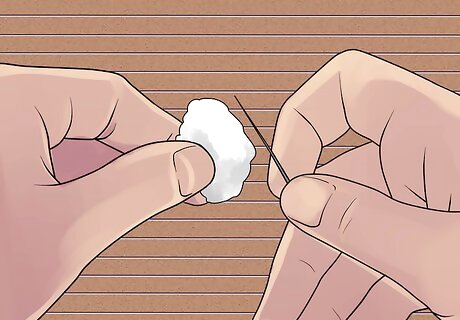
Sterilize a needle to lance the wound with. Before you attempt to lance the wound, you'll want to make sure you have a sharp, sterile needle. Since environmental bacteria may have contaminated the needle, you'll want to sterilize the needle before piercing the skin with it. Choose a clean, sharp needle. A dull needle will not lance well, and a dirty or rusty needle will raise the risk of an infection. If you are using rubbing alcohol to sterilize the needle, soak a clean cotton swab in alcohol and wipe the needle down. If you prefer, you can also sterilize the needle with a lit flame. To ensure a more sterile needle, you may wish to wipe the needle with alcohol and then hold it over a flame.
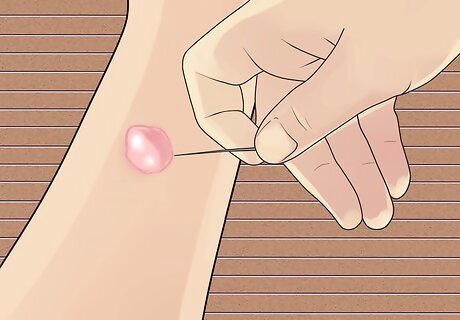
Puncture the blister at its edge. When you puncture the blister, make sure you insert the needle along the edges of the blister. Try to keep the needle parallel to your skin, and don't pierce too deep to avoid injuring the delicate tissue underneath. Try to insert the lancing needle several times, all along the blister's edge. This will help facilitate draining by opening up more outlets. Generally speaking, two to four lance holes should be enough to drain the fluid out. Try to space the lance holes out evenly around the edges of the blister.
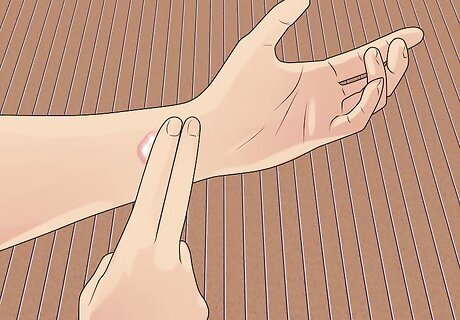
Drain the blister. Once you've lanced the blister, it's important that you drain out all the fluid inside. If you don't get the fluid out, the blister will remain large and potentially painful. Gently massage the blister to help work the fluid out if it will not drain on its own. Make sure the overlying skin remains in place through all of this. Dislodging the skin flap will be very painful and may delay healing or leave you susceptible to an infection. Gently wipe the blister and its surrounding skin dry with a clean disposable towel.
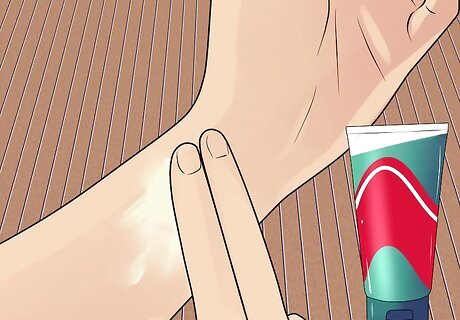
Apply a protective ointment. Once the blister has been drained, you'll want to make sure the wound doesn't get infected and doesn't dry out. A dry wound can lead to broken skin and a prolonged healing period, and may even cause an infection. An antibacterial ointment will protect the wound from infection, but if you don't have anything with antibacterial properties you can use petroleum jelly or Vaseline to keep the wound from drying out. Make sure you apply extra antibacterial ointment at the sites of the lance punctures.
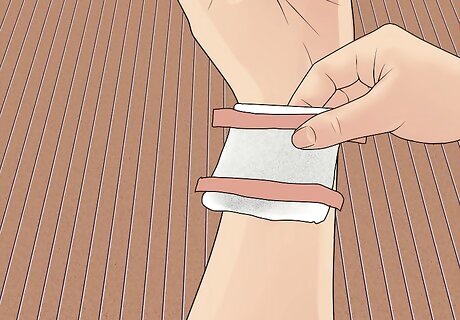
Dress the wound. Apply a clean bandage that fully covers the blister to protect it from getting infected. Make sure the skin flap is covering the wound before applying the bandage. You can either use an adhesive bandage (if it adequately covers the blister), or you can tape a clean piece of gauze in place over the wound.
Caring For the Wound After Draining
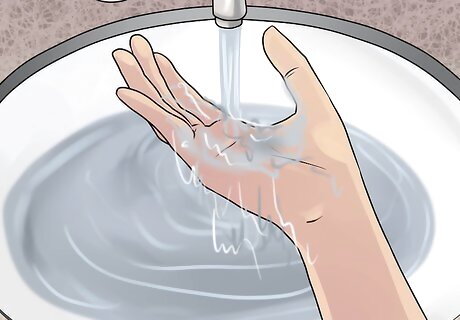
Wash the area every day. It's very important that you change the dressings and wash the blister wound every day until it is fully healed. Follow the same procedure you used to wash the blister prior to lancing it, and make sure you take precautions so the wound doesn't become agitated or infected. Use clean, running water and a mild soap. Do not use hydrogen peroxide or rubbing alcohol, as these may delay the healing process. Be very gentle as you wash the wound. Scrubbing or any other rough contact could peel back the overlying skin or irritate the lance wounds. Keep the wound moist with antibacterial ointment or vaseline. Cover it with clean dressing to speed up healing.
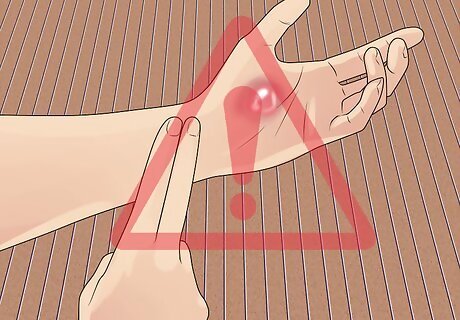
Check for signs of an infection. Sometimes infections can form on a wound in spite of your best preventative measures. Cleaning the wound and changing the dressings will dramatically reduce the chance of an infection developing, but you should still check to make sure the skin looks healthy on and around the wound each day. Some signs to look for include: increased pain swelling/redness/warmth at the site of the blister red streaks in your skin that radiate out from the blister production and drainage of pus under the blister a fever with a body temperature over 98.6 degrees Fahrenheit (37 degrees Celsius)
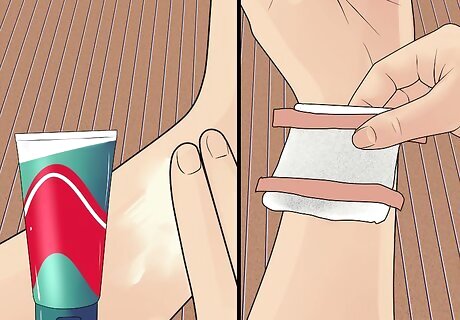
Apply new ointment and a new, clean bandage. Use clean bandages/gauze each time you wash the blister. You should do this at least once a day and any time the dressings get wet or dirty. This can help reduce the risk of infection and speed up the healing process. Make sure you continue to apply ointment to the sites of the lance wounds. An antibacterial ointment is ideal to help prevent infection, even after you've drained and dressed the wound.
Preventing Future Blisters
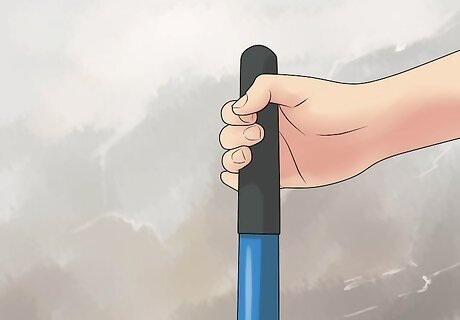
Try to toughen up the skin. One way to prevent future blisters is to toughen the skin where blisters have formed or may form. This is best done when no blisters are present, as any friction on an existing or healing blister will be very painful. Spend a few minutes every day working the skin with whatever activities you fear will cause a blister. For example, if you row on a crew team and want to toughen your palms, spend some time rubbing an oar handle against the palms of your hands. Don't overdo it as you try to toughen your skin, or you may inadvertently form a blister.
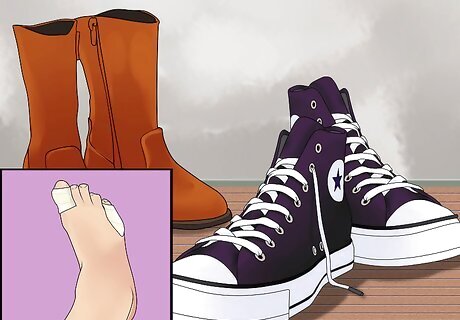
Reduce or prevent friction on susceptible areas. Friction is one of the biggest causes of blister formation. Friction is frequently caused by poorly-fitting footwear or lack of protection on the hands. Wear shoes that fit well and aren't too big or too small. Tape up any "hot" spots that you notice on your feet, as these are likely to develop into blisters if they're not given attention. You can also use moleskin on hot spots before they become blisters. Wear thick work gloves any time you will be working with tools like shovels or picks.
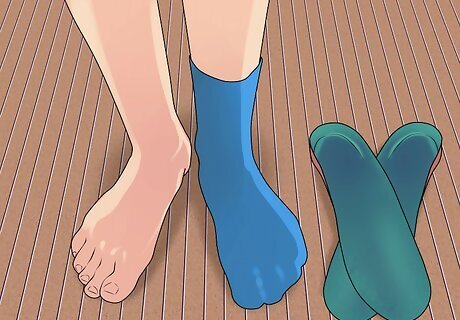
Keep your feet dry. In addition to poorly-fitting footwear, wet feet are often a major source of blisters. Some people are more prone to sweaty feet, while others may work outdoors where stepping in water is unavoidable. Whatever the cause, there are steps you can take to help keep your feet as dry as possible throughout the day. Wear moisture-wicking socks to keep your skin dry and change your socks as needed throughout the day to ensure you don't have wet cloth rubbing against your feet. Use a spray-on foot deodorant to help keep your feet from getting too sweaty.
















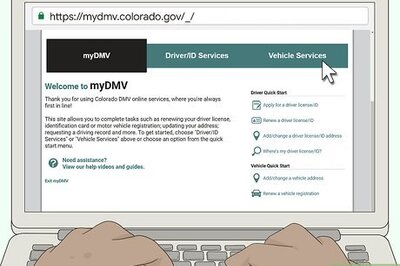
Comments
0 comment